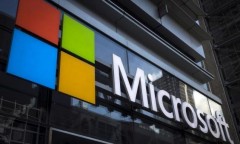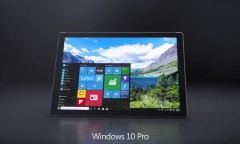By Staff Reporter, | February 22, 2016

Microsoft showing off some of the hardware mixed with software security features in Windows 10 that are designed to keep users safe from threats.
How is Windows 10 when it comes down to keeping hackers at bay? Mandy Tidwell from Microsoft made sure to explain why in a bid to assure governments that using the operating system will not put them at risks.
According to Tindell, security was a prime focus when work was being done on Windows 10, and it is still the case to this very day. The platform should be able to protect governments from the high amount of hacks that happen each day.
Like Us on Facebook
For example, Windows 10 offers something known as Microsoft Passport. It is a 2-factor authentication process that combines a PIN number with a registered device. The device can also be connected with the user's iris, fingerprint, or facial structure. Thanks to this process, hackers should have a difficult time breaking into a government account used by an employee.
This process also prevents employees from using a username and password, because it gives hackers something physical to get their hands on. An employee username and password can be a problem because, in most cases, it is identical to what other employees use.
Another security feature Tindell talked about is something called Windows Credential Guard. It's a virtualization feature that separates credential information from the core aspect of the operating system. This means that should a malware infect the computer; it will not be able to reach relevant credentials because they are isolated.
There's also a feature called Device Guard that was designed to ensure that malwares do not get installed on enterprise computers. If companies install Device Guard, the IT department can decide to only allow specific programs to run on the Windows 10 system, ultimately rendering any malware useless.
To wrap things up, Tindell spoke about the built-in Windows Defender client. It's a new version of Microsoft's malware scanner that runs in the background. The software has improved in recent times to the point where it can be used as the sole wall of defense against many threats.
"As the number and intensity of cyberattacks increase, cybersecurity has become a major focus for governments around the world," according to Tidwell on the Microsoft Blog. "Over the past few years, governments at all levels have been stepping up their protections, yet the threats continue to mount. Windows 10 has been designed to address security threats in a world of escalating risks."
It should be interesting to see if Windows 10 Enterprise can do all of these things when installed on government computers around the world.
-
Use of Coronavirus Pandemic Drones Raises Privacy Concerns: Drones Spread Fear, Local Officials Say

-
Coronavirus Hampers The Delivery Of Lockheed Martin F-35 Stealth Fighters For 2020

-
Instagram Speeds Up Plans to Add Account Memorialization Feature Due to COVID-19 Deaths

-
NASA: Perseverance Plans to Bring 'Mars Rock' to Earth in 2031

-
600 Dead And 3,000 In The Hospital as Iranians Believed Drinking High-Concentrations of Alcohol Can Cure The Coronavirus

-
600 Dead And 3,000 In The Hospital as Iranians Believed Drinking High-Concentrations of Alcohol Can Cure The Coronavirus

-
COVID-19: Doctors, Nurses Use Virtual Reality to Learn New Skills in Treating Coronavirus Patients











